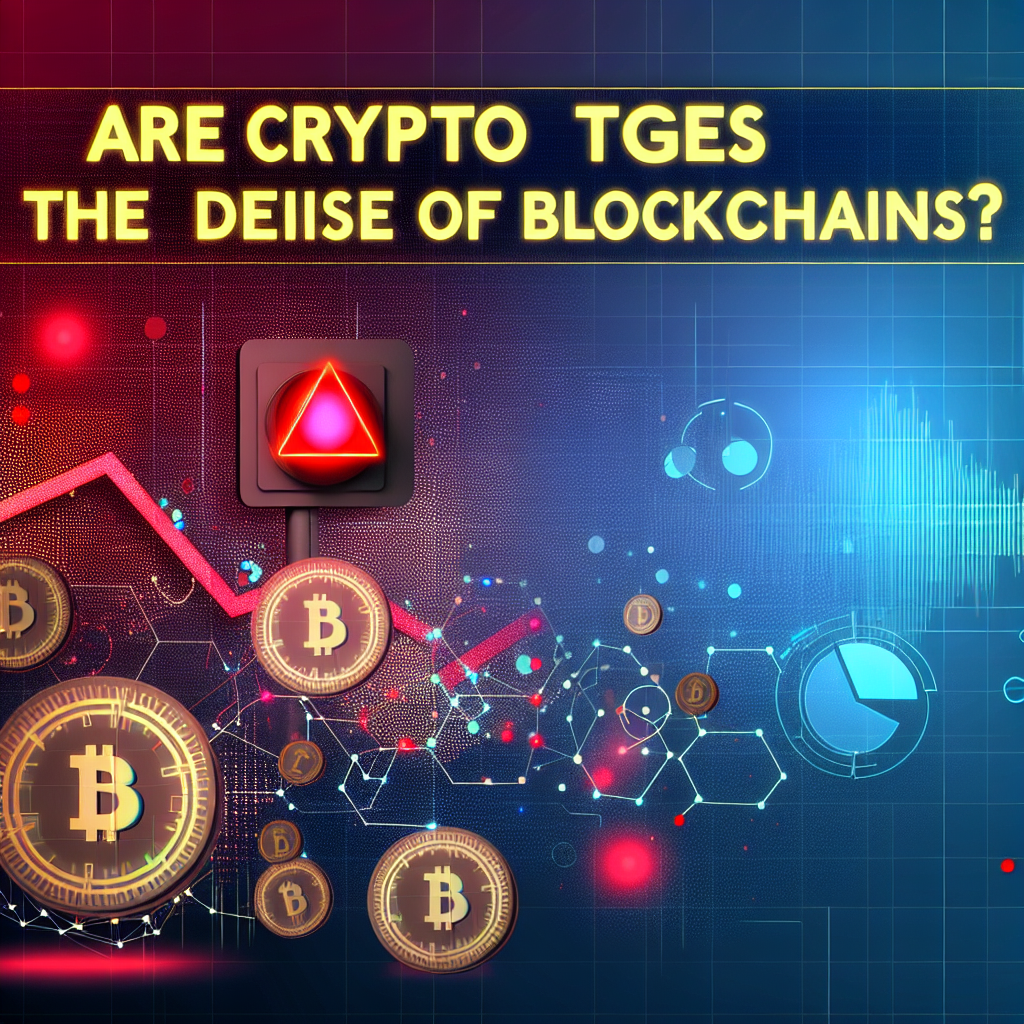Token generation events (TGEs) face growing scrutiny as potential exit strategies for crypto founders, leaving behind blockchains with minimal activity.
Projects often launch with a limited circulating supply and exaggerated valuations, providing real supporters little chance for sustainable returns. Industry insiders contend that low floats and automated market makers (AMMs) temporarily support prices, but as vesting unlocks begin, sell pressure usually overwhelms the market.
Some tokens see a spike at launch due to hype and scarcity, but most experience a steady decline as supply enters circulation.
“It’s a never-ending cycle,” stated Brian Huang, co-founder of Glider, in an interview with Cointelegraph. “A new chain becomes irrelevant, talent departs, and those left behind are stuck with a chain sustained by market makers and AMMs.”
The increasing prevalence of orphan chains post-TGE
In the past year, several founders have faced backlash for exiting their projects shortly after token launches.
Jason Zhao, founder of Story Protocol, departed from his full-time role approximately six months post-launch. Early reports indicated his exit coincided with a half-year vesting cliff, though Story denied this, asserting that core contributors face a one-year cliff within a four-year vesting schedule.
Related: Crypto markets brace for Fed rate cuts amid governor shakeup
“In reality, the token launch should signify the project’s start,” Huang remarked, questioning the motivations behind such early exits.
Aptos founder Mo Shaikh also stepped down on Dec. 19, over two years after the Aptos token and mainnet launch. Critics pointed out that his departure came shortly after a major vesting milestone.
Sterling Campbell, an investor at Blockchain Capital, recognized that some founders approach token launches as cash grabs, but suggested the issue is more widespread.
“There’s also founder fatigue, misaligned incentives, and sometimes the harsh realization that product-market fit isn’t present,” Campbell told Cointelegraph.
“The dynamic seems less about individual wrongdoing and more about a system that facilitates easy early exits.”
Researchers at Messari reported that token vesting directly affects a token’s performance. An analysis of 150 major tokens revealed that those with greater insider allocations performed worse in 2024.
Do post-TGE exits indicate an oversupply of blockchains?
The surge of token generation events prompts a broader discussion about the need for additional blockchains in the industry. What was once the launchpad for ambitious new networks is now criticized as the end goal itself, with the underlying blockchain fading into obscurity.
In a recent interview with Cointelegraph, Altius Labs co-founder Annabelle Huang (unrelated to Brian Huang) suggested that the industry does not require more general-purpose blockchains like Ethereum or Solana. Nonetheless, she acknowledged a need for new networks tailored to specific use cases.
Related: Institutional adoption encounters blockchain bottlenecks: Annabelle Huang
Some projects exemplify this transition. Hyperliquid, for example, gained traction not by promising a new general-purpose chain but by constructing a derivatives exchange, subsequently verticalizing into its own chain. In contrast, many new layer 1s and layer 2s launch without a breakthrough application to justify their existence at TGE.
“Investment is flowing towards Hyperliquid apps and other projects with real usage. In comparison, many of the new L1s and L2s are in a holding pattern,” emphasized Brian Huang of Glider.
The reasons new chains continue to attract venture capital remain unclear. Solana initially justified its launch with a performance advantage over Ethereum, but most newer blockchains now offer similar levels of performance. Consequently, investors may favor networks with established distribution. Concurrently, competition is escalating as corporate-led chains from companies like Stripe and Robinhood enter the market, already equipped with vast user bases.
“They expedite distribution and normalize crypto for mainstream users, [but] they risk diluting the ethos of permissionless networks,” cautioned Campbell.
“There is a very real risk that Robinhood leverages the open-source network we’ve built over the past 10 years and eclipses everyone’s efforts.”
TGE and vesting schedules impact long-term supporters
The optics are particularly troubling when a founder exits a multimillion-dollar project shortly after a TGE, even if tokens are subject to vesting schedules designed to stagger insider sales.
Some community members argue that vesting terms are public and that investors should be aware of the risks before investing.
Additionally, the vesting terms create significant challenges for the genuine supporters of many modern chains. A May 2024 Binance Research report estimated that $155 billion worth of tokens are planned to unlock by 2030. Without adequate demand to absorb them, the steady influx of supply risks perpetually adding selling pressure to the market.
Such tensions underscore a more profound issue with TGEs themselves. Intended as fundraising mechanisms, they increasingly operate as liquidity events that benefit insiders while leaving ecosystems without their founding leaders.
Unless projects can demonstrate lasting engagement beyond their launch, the cycle of inflated valuations, premature exits, and fading blockchains is likely to persist.
Magazine: 7 reasons why Bitcoin mining is a terrible business idea

